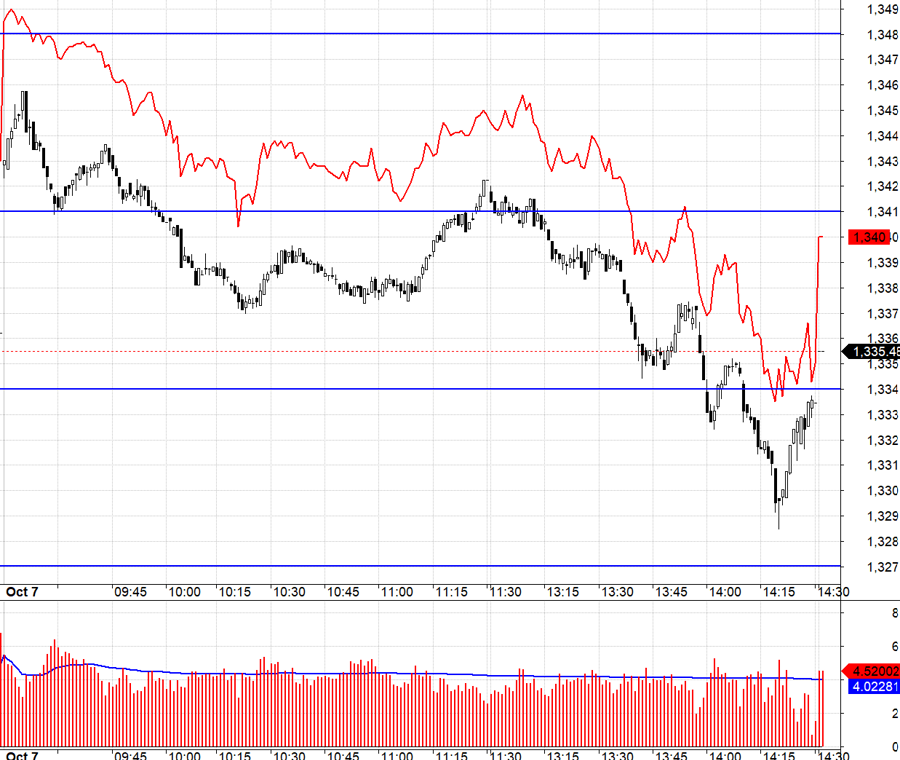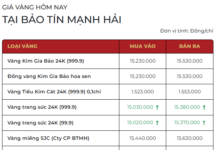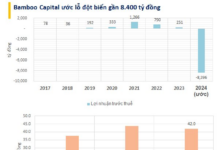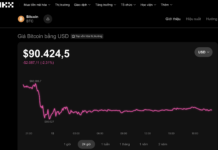Today’s price action was interrupted by the patience of waiting liquidity, stifling any potential recovery. It was only when prices dipped lower that larger waiting orders emerged, revealing substantial buy-side interest. The low volume carried over from last weekend’s session, which could be seen as a positive sign as those who wanted to cut losses had already done so.
The unexpected macroeconomic data released over the weekend sparked some initial excitement, but the market sentiment quickly turned sour as buying pressure waned. Sellers are currently in control of the market, and price negotiations are likely to continue, resulting in more range-bound sessions like today with low volume until buyers become more aggressive.
Intraday price movements are creating a sense of frustration, as any upward momentum is met with selling pressure. However, this sentiment primarily affects existing shareholders, while those holding cash are in a more comfortable position. The market is still in the “margin testing” phase and has yet to reach the stage of testing investors’ psychology. It will only transition to the bottom-forming phase when shareholders become indifferent to price movements.
Today’s session had two positive aspects. Firstly, the volume; in a downward trend, slow trading after high-volume distribution and sharp declines could indicate either a reduction in selling pressure or a decrease in loose liquidity. The matched orders on the two exchanges today amounted to only 11.5 trillion VND, similar to mid-September levels. Secondly, there were many deep-priced bottom-fishing orders placed towards the end of today’s session. Whenever prices dipped, trading activity picked up, and some stocks, particularly in the securities sector, witnessed impressive reversals, suggesting a shift in cash holders’ investment perspectives.
Market transactions always involve probing the intentions of both buyers and sellers, and volume, price range, and direction are part of that equation. While predictions may sometimes be wrong, the probability of accuracy increases when multiple signals align over several sessions. Therefore, the process of forming a market bottom or top often involves false signals and rarely concludes within one or two sessions.
Some stocks have pulled back to attractive buying levels, but as the market remains unstable, a gradual buying strategy is recommended. Shareholders are at a relative disadvantage, so patience can be a virtue. Buying on dips is relatively easy, and covering previously sold positions means there’s enough for everyone without the need to compete.
Today’s futures market continued to reflect expectations for the underlying market, with the F1 basis remaining positive throughout the day. However, this situation on low volume made it vulnerable to short-selling. While short-selling was safe in the morning when VN30 broke below 1341, it wasn’t very profitable as the large-cap stocks remained range-bound, and not cutting losses quickly even led to losses. The afternoon session was more favorable, with the second break below 1341 on VN30 resulting in more substantial price movements due to the combined pressure on large-cap stocks, despite the basis not narrowing. VN30 opened up two volatility ranges, from 1341 down to 1334 and then to 1327. However, it’s crucial to maintain discipline by closing half the position at the 1334 level to secure profits, with the remaining half aiming for additional gains or breaking even.

With today’s significant drop in volume, the amount of loose liquidity in the market appears to be decreasing. It’s likely that the market will experience a few narrow-range sessions with low volume or sessions where supply is tested through forced selling. The strategy remains the same: look for buying opportunities in stocks and dynamically manage long/short positions in derivatives.
VN30 closed today at 1335.48. Tomorrow’s resistance levels are 1341, 1348, 1356, and 1365. Support levels are 1333, 1325, 1318, and 1308.
“Blog chứng khoán” reflects the personal views of the author and does not represent the opinions of VnEconomy. The assessments and investment perspectives expressed are solely those of the author, and VnEconomy respects the author’s views and writing style. VnEconomy and the author are not responsible for any issues arising from the published assessments and investment perspectives.

































